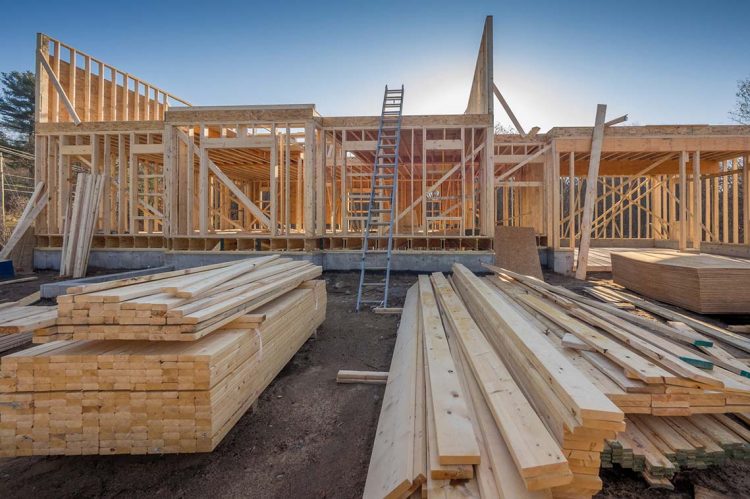Editor’s Note: The following is a commentary by Carlos Martin, project director for the Remodeling Futures Program at the Joint Center for Housing Studies at Harvard University. The Remodeling Futures Program seeks to produce a better understanding of the home improvement industry and its relationship to the broader residential construction industry. Learn more here.
One sector that has experienced sustained growth in the housing industry has been home remodeling. Despite the home improvement industry’s traditional nimbleness in meeting demand, though, headwinds are strong and getting stronger. Two major remodeling inputs are especially challenging: materials and skilled labor, and the cost and availability of both.
Materials
Much media attention has been paid to the rising costs of materials and construction products due to global supply chain issues exacerbated by the pandemic. Economists and industry analysts have also pointed to inflation and related manufacturer behavior as reasons for the increases. Overall, the costs of construction inputs have increased for both new residential construction and remodeling, at 23.2% and 22.1%, respectively
However, the rise in construction material costs during the pandemic was not uniform in size or timing. Certain material prices were especially prone to wild fluctuations, such as steel (whose average costs more than doubled since the start of the pandemic) and lumber and plywood (whose price also doubled one year into the pandemic but has come back down). Other materials, like glass, drywall, and plastic construction products saw sharper price increases than other materials during this time. But price spikes were not simultaneous, and they didn’t occur until well into the pandemic.
Fluctuations in material prices existed long before the pandemic, though. U.S. construction’s raw materials and product components have increasingly been sourced from around the globe. Any variation in manufacturers’ processes or the delivery of their goods can shape the cost of building or remodeling a US home—from European energy costs to Chinese construction demand or US trade tariffs before and after COVID. Current supply chain dynamics will continue to feed into this, but this unknown was largely known. Future supply chain challenges, such as those from climate change disruptions, will continue.
Labor
Inflation in materials’ costs may come from increases in the costs of the labor to produce them. While this might be true for some construction material manufacturers’ workforce, construction occupations’ average wages (about 7.1%) have not risen faster than inflation, and have not risen anywhere close to the same rate as materials during the pandemic.
Increased salary demands don’t appear to be the factor with which the housing industry needs to concern itself. Rather, it is the broader concern about finding workers at all. Job openings have been steadily rising since the pandemic’s start, despite the volatile early months of massive layoffs followed by rehiring. Job opening rates in the construction industry are higher than at any time in the last two decades—even during the heady years of the housing boom in late 2005. Further, job opening rates surpassed both hiring and separation rates last fall.
Like material price fluctuations, the availability of skilled construction workers has hampered the housing industry for decades. Remodelers have always been subject to skilled labor shortages because of the shorter and more frequent production times of remodeling work. With remodeling among the highest growth sectors of the industry during the pandemic, worker shortages are even more acute going into 2022.
But the pandemic has introduced something new: more workers are quitting their construction jobs and for over a longer period. For the last six months of available data (June to November 2021), more workers quit than were laid off or separated for other reasons. The last time we saw a period of sustained job departures this long was during the late 2005 peak of the housing boom—and even then, quits did not consecutively surpass all other reasons for separation for more than a month or two.
Given data limitations, we don’t know yet if there are certain occupations from which workers have been quitting more (e.g. skilled construction tradespeople versus office staff) but the proportionally largest pre-pandemic employment reductions happened in the trades. In the year preceding the pandemic, for example, the occupations where employment fell the most in absolute terms were carpenters, construction laborers, and first-line supervisors of construction trades. The construction occupations that gained the most were general and operations managers, other service managers, and project management specialists.
In theory, managers and other administrative staff have skills they can transfer readily to other industries, such as project management or accounting. They could arguably be more likely to quit when there are many job openings. Combined with the continued declines in newcomers to the construction trades and the inability to pass comprehensive immigration reform to replenish the workforce, the high quit rate could make for challenging times ahead.
Though home retrofits, repairs, and improvements of all kinds are projected to continue expanding, these long-term material and labor challenges are likely to constrain more in 2022.
To view the full report, click here.
Carlos Martin, project director for the Remodeling Futures Program as the Joint Center for Housing Studies at Harvard University.












